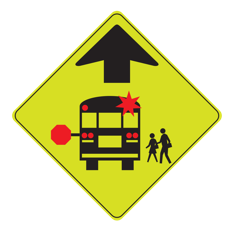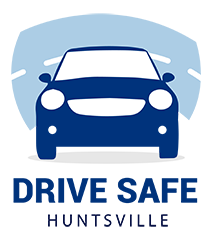School Buses
Following a school bus that is on its morning or afternoon route is one of the most frustrating things you’ll encounter as a driver. As the line of cars behind the bus grows and grows, so does the temptation to pass the bus at its next stop. Besides being illegal, this is one of the most dangerous and irresponsible things you could do.

Learn to recognize the exact time of day that school buses are taking students to or from school. Also know, however, that these buses can transport passengers any time of any day. As you might know, school buses are regularly used to transport athletes to sporting events. They are used to bring students to and from school field trips. They might also be used as shuttle buses for local events or by churches.
 A school bus driver should activate amber flashing lights to warn drivers that a stop is coming up. Take this as a sign to slow down and not to speed up and pass the bus. Shortly after the amber lights, you should see a turn signal immediately followed by red flashing lights and that tell tale stop sign that pops out from the driver’s window. When you see this happen or come upon it, stop completely. This again, is whether you approach the bus from the front or the rear. Do not even roll ahead slowly. Technically, school bus drivers are supposed to keep the vehicle in place until all other vehicles in the area are completely stopped.
A school bus driver should activate amber flashing lights to warn drivers that a stop is coming up. Take this as a sign to slow down and not to speed up and pass the bus. Shortly after the amber lights, you should see a turn signal immediately followed by red flashing lights and that tell tale stop sign that pops out from the driver’s window. When you see this happen or come upon it, stop completely. This again, is whether you approach the bus from the front or the rear. Do not even roll ahead slowly. Technically, school bus drivers are supposed to keep the vehicle in place until all other vehicles in the area are completely stopped.
Once you see the flashing red lights go out and the stop sign is pulled back in, prepare to resume travel. The school bus driver should signal and resume travel along the route. They may, however wave on vehicles to pass. If the bus driver waves you on, be thankful but be cautious. The reason it is so dangerous to drive near a school bus is the unpredictable actions of young children. Just because the driver waved you on does not mean a child who is late for the bus will not dart out into the street to catch it. Many times, parents and younger siblings of school bus passengers wait at the stop with them. You cannot always tell what they will do or where they’ll go after the bus departs.
If you follow a school bus regularly because you take the same way to work, think about adjusting your route. What you do not want to do is lose your patience. Remain calm and let the school bus driver proceed. Often times, attentive drivers will pull over if they see a long line of traffic forming behind them. This is a courtesy; they are not required to.
If you are on a divided highway with two lanes traveling in each direction, you need not stop for a school bus approaching from the opposite direction. On an undivided highway with four, or even six total lanes, you must still observe the standard rules.
In the latest edition of your Alabama Driver’s Manual, you will see a section on something called the “Death Zone.” Quite simply, it shows an area around the school bus where most injuries – and deaths – occur. Children are not typically injured on the school bus. They are injured by impatient drivers ignoring or not seeing the extended stop sign. Or they jumped out from behind the bus as another driver tried to pass. On top of that, the area immediately in front of a school bus is completely blind to the bus driver. Children running to catch the bus at the last minute or crossing the street to catch up to friends pose a serious risk – to themselves. Always remember, young children at the side of the road anywhere, not just near a school bus, may suddenly take some completely unexpected action – and end up right in your path. Use extreme caution when approaching one or more young children. Most of them do not realize the danger of being so close to moving vehicular traffic.
